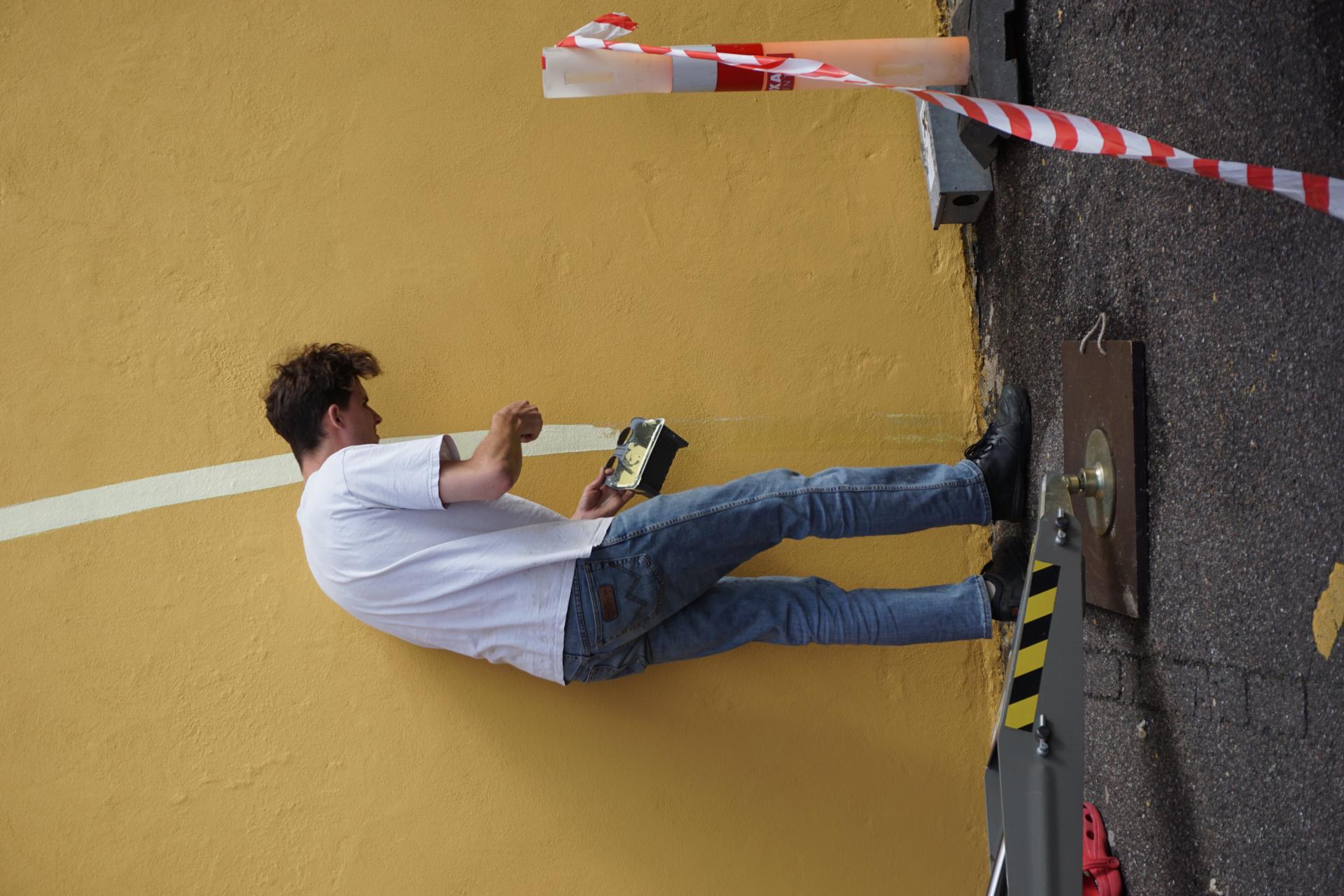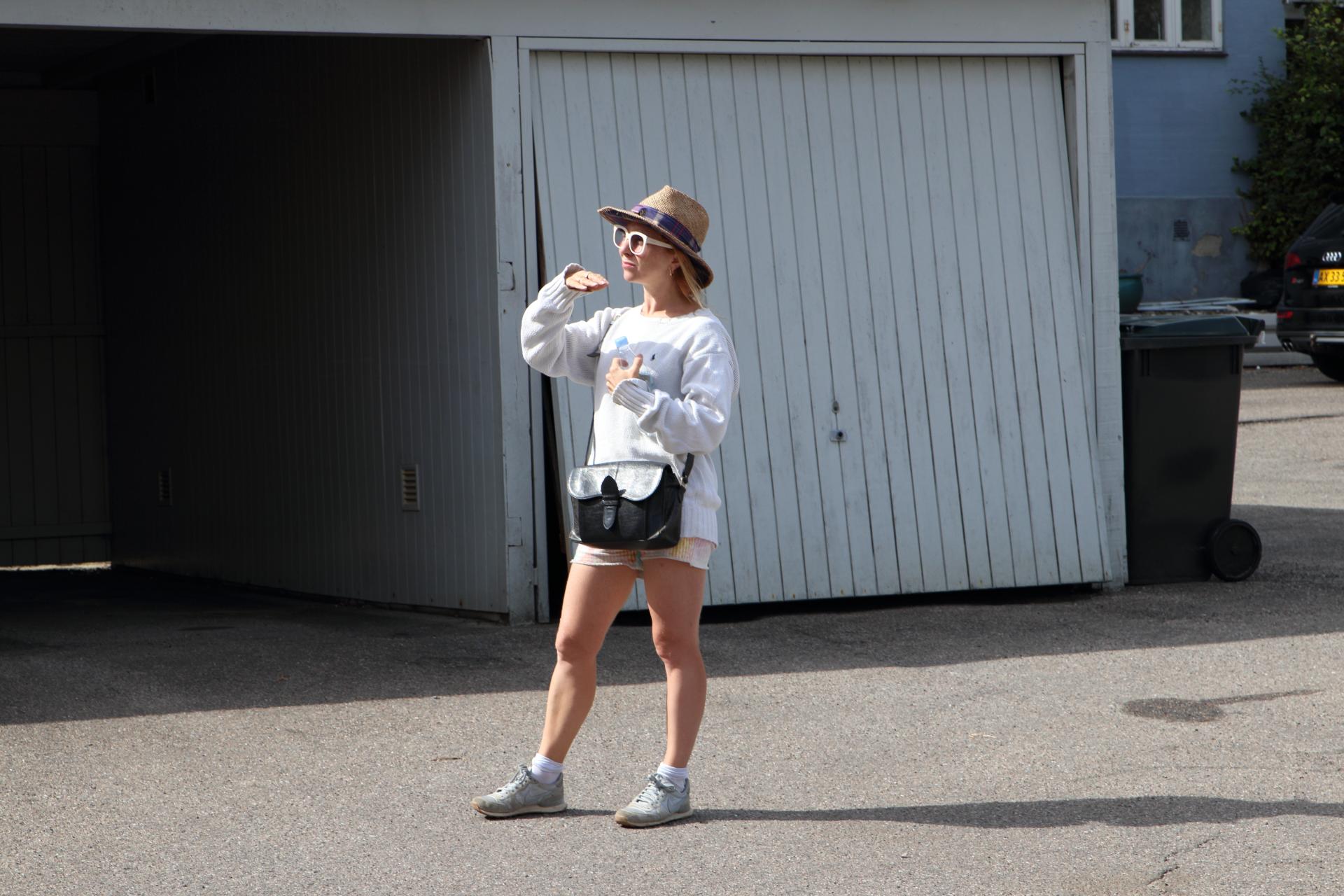Two white arches have been painted on the curved yellow gable of Holbæk Theatre. It could be lines from the parking lot that have continued up the wall, yet they also resemble the outline of two planetary orbits. Two brass pendulums, wound with a long wire, are attached up high on the wall on two iron supports. Lying there, they resemble beautiful golden missiles, but when the pendulums are in motion, they form the orbits and circles outlined on the wall.
From the earliest scientific investigations of the pendulum, carried out by Galilei in around 1602, its regular motion has been used to measure time. Up until the 1930s it was considered the most accurate technology for this purpose. The word “pendulum” originates from the Latin word pendulus, meaning “hanging.” Today, however, pendulums are mainly used to seek answers to more existential questions. The work investigates the forces that control our movements on the planet and in life. Without gravity we’d float freely around the atmosphere. It keeps us anchored to the ground, but we’re not always aware of the other factors that condition our journey.
b. 1981 in Frederikssund, lives and works in Copenhagen.





